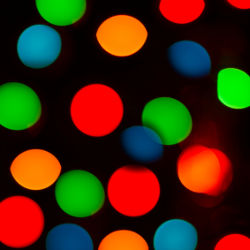
Photorealistic images created using physical simulations of light have become a ubiquitous element of our everyday lives. The most successful techniques for producing such images replicate the key physical phenomena in a detailed software simulation, including the emission of light by sources, transport through space, and scattering in the atmosphere and at the surfaces of objects. Mathematically, this computation involves the approximation of many high-dimensional integrals, one for each pixel of the image, usually using Monte Carlo methods. Although a great deal of progress has been made on rendering algorithms, so that physically based rendering is now routinely used in many applications, commonly occurring situations can still cause these algorithms to become impractically slow, forcing users to make unrealistic scene modifications to obtain satisfactory results.
Light transport is complex because light can flow along a great variety of different paths through a scene, though only a subset of these makes relevant contributes to the final image. The simulation becomes ineffective when it is difficult to find the important paths. Commonly occurring materials like smooth metal or glass surfaces can easily lead to such situations, where only very few lighting paths participate, leading to spiky integrands and poor convergence. How to efficiently handle such cases in general has been a long-standing problem.
In this paper, we provide a geometric solution to this problem by representing light paths as points in an abstract high-dimensional configuration space that is defined by a system of constraint equations. This configuration space is a differentiable manifold, which can be locally parameterized in the neighborhood of an existing path. Building on this framework, we propose Manifold Exploration, a rendering technique that efficiently explores the integration domain by taking geometrically informed steps on the manifold of light paths.
1. Introduction
The central goal of light transport algorithms in computer graphics is the generation of renderings, two-dimensional images that depict a simulated environment as if photographed by a virtual camera. Their applications are diverse and range from predictive visualization in design and architecture to visual effects and fully rendered movie productions. Fueled by the pervasive use of renderings in our society, the demands on their realism have rapidly grown over the years: generally, users of rendering software want their images to look, in various ways, "real," which has driven the field toward rendering techniques that are based on the physics of light transport. Coupled with the decreasing cost of computation, these methods have seen substantial adoption over the last two decades.
Physics-based rendering techniques require a detailed model of the scene including the shape and optical properties of all objects including light sources; the final rendering is then generated from a detailed simulation of transport and scattering, that is, the propagation of light and its interaction with the materials that comprise the objects. Mathematically, this simulation is equivalent to computing a high dimensional integral for every pixel. Due to the challenging nature of these integrals (no analytic solutions, discontinuities and singularities, unbounded number of dimensions), Monte Carlo (MC) techniques are in most cases the only available tool for evaluating them. The details of this computation will be discussed shortly in Section 1.1.
The function to be integrated for each pixel is defined in terms of the input scene description provided by the user. Certain input, particularly scenes containing metal, glass, or other shiny surfaces, can lead to integrals that are difficult to evaluate. Depending on the roughness of the surfaces, the integrand can take on large values over small regions of the integration domain. Surfaces of lower roughness lead to smaller and higher-valued regions, which eventually collapse to lower-dimensional sets with singular integrands as the surface roughness tends to zero.
MC techniques evaluate the integrand at many randomly chosen points throughout the integration domain, and the result of the integral is then approximated by the average of these samples. Convergence problems arise whenever high-valued regions receive too few samples. Depending on the method used, this manifests as objectionable noise or other visual artifacts in the output image that gradually disappear as the sample count N tends to infinity. However, due to the slow convergence rate of MC integration (typical error is



Join the Discussion (0)
Become a Member or Sign In to Post a Comment